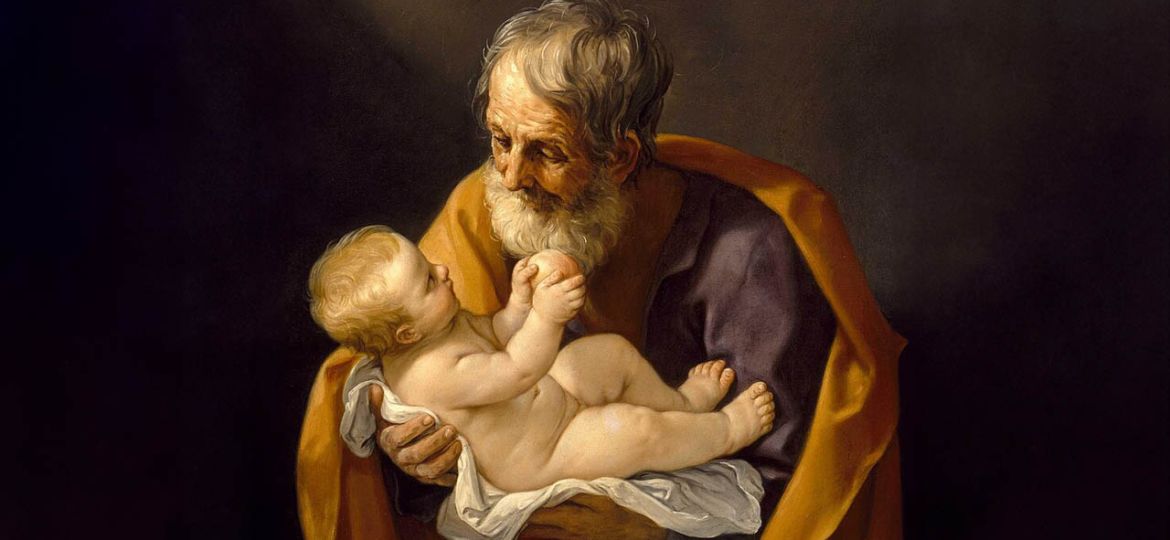
Thematic Issue (Inspiring Faith)
by Fr. Neil J. Roy, STL, PhD; SAGI Chaplain & Director, Inspiring Faith*
*Saint Albert the Great Institute for Science, Faith & Wisdom
March the Month of Saint Joseph
Words of Wisdom: The month of March is dedicated to St Joseph, the chaste spouse of the Blessed Virgin Mary and the foster father of our Lord Jesus Christ. Little is known about this humble carpenter from Nazareth who placed himself completely at the service of the Virgin Mother and her divine Son. The few details of St Joseph’s life and mission recorded in sacred Scripture are limited to the Infancy narratives in the Gospels of Matthew (1:16-25; 2:13-23) and of Luke (1:27; 2 passim; 3:23).
A CARPENTER OF ROYAL LINEAGE & HEAD OF THE HOLY FAMILY
Although descended from King David, and, therefore, of royal lineage, St Joseph did not enjoy the luxuries that his royal background might have suggested and perhaps even warranted. Joseph led his life in the obscurity of the northern region of Galilee, not in the religious and political hub of Jerusalem. He labored as a carpenter and builder by the sweat of his brow and the skill of his hands. Joseph’s unique vocation was to serve as a chaste spouse for the Virgin Mother of God, Mary Most Holy, and as the putative father of Jesus Christ, the Son of God who was conceived by the power of the Holy Spirit.
As the head of the Holy Family at Nazareth, St Joseph strove to provide daily sustenance and secure shelter for his sacred charges. According to the divine economy or plan, Jesus and Mary were the very reasons for Joseph’s existence, and, consequently, they formed the center of his life. He lived for them and rejoiced in their presence. This daily familial contact with Jesus and Mary afforded Joseph ample fruit for contemplation and constituted a constant source of singular grace for him, the dedicated servant.
Despite Joseph’s industry and diligence, the Holy Family was not affluent. At the time of the great census decreed by Caesar Augustus, Joseph went with Mary to Bethlehem for the enrollment, they had to settle for a stable as their lodging (Lk 2:4-17). When it came time to present the Christ Child in the Temple at Jerusalem, the Evangelist Luke points out (Lk 2:24) that St Joseph provided a pair of turtle doves – the offering of the poor.
OBEDIENCE TO DIVINE WILL & PATRON SAINT OF THE CHURCH
The Gospel of Matthew records that St Joseph surrendered at once to the Divine Will, by relocating from Israel to Egypt in order to rescue the Child Jesus from imminent peril to his life (Mt 2:13-15). This meant uprooting himself altogether from his cultural heritage and personal history as well as undertaking the daunting task of reestablishing himself personally and professionally in a foreign and often hostile land. Nevertheless, Joseph sought first the Kingdom SAGI: The Greatest Experiment • Thematic Issue (Inspiring Faith) • Volume 3 • pages 1-2 • 19 March 2024 of God, and he took the Child Jesus and His Holy Mother to Egypt, until he was told in a dream about the deaths of Herod and those who had sought the life of the Infant Savior.
A “lover of poverty” and a “model of all who labor,” as he is acknowledged in his Litany, St Joseph displayed the humility that God loves and rewards abundantly. Like his namesake, the patriarch in Genesis (37; 39-50) whom Pharaoh appointed viceroy of Egypt, St Joseph was placed by God at Nazareth as “lord of His household and Prince over all His possessions” (Ps 104/105:21). In 1870, Bd. Pope Pius IX (r. 1846-1878) extended this scriptural analogy by declaring St Joseph the principal patron saint of the Church. By this official proclamation, Pio Nono implored the protection of St Joseph’s intercession for the universal Church at a time when the hostile forces of the Risorgimento threatened the spiritual and temporal authority of the Church in the Italian peninsula.
St Joseph enjoys two feast days on the liturgical calendar. His principal feast occurs on 19 March. Since this feast nearly always falls in the penitential seasons of Lent or Passiontide, the Church offers a second feast, that of St Joseph the Worker, which takes place in the Easter Season. This latter feast ranks of the first class in the classic form of the Roman rite. In the
calendar revised in 1969, St Joseph the Worker is observed as an optional memorial.
A SPECIAL MESSAGE
As a model of the interior life, St Joseph is aptly invoked during the season of Lent, when the Church prepares for the celebration of the paschal mystery of Our Lord Jesus Christ. His quiet meditation on Jesus and Mary encourages us keep these figures before our eyes in prayer and to follow them faithfully on our pilgrimage through Lent to the Easter season, flowing with milk and honey.


